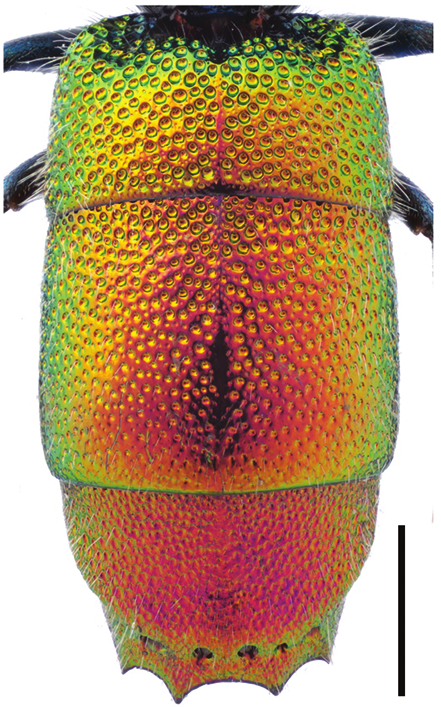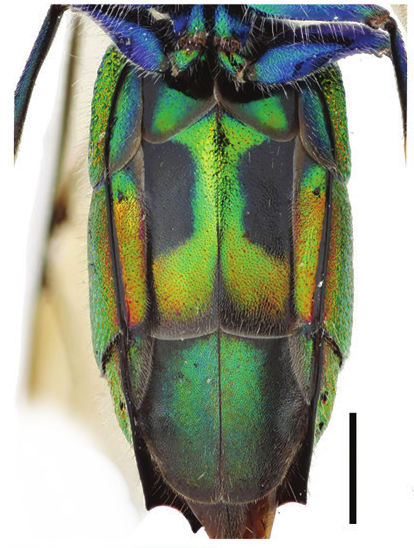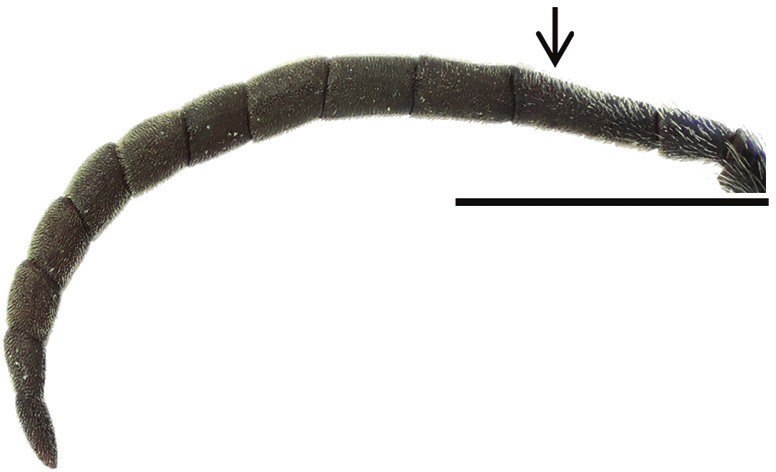Chrysis corusca
A relatively rare species recorded from forest margins and sandy areas. The host is the Eumeninae Symmorphus gracilis. The species is similar to Chrysis angustula, but the punctation of the tergites is more coarse and dense.
- Innhold
- Diagnosis
- Distribution
- Biology
Diagnosis
Figure 103
Metasoma, dorsal view: C. corusca ♀. Scale 1 mm.
Figure 123
Metasoma, ventral view: C. corusca ♀. Scale 1 mm.
Figure 128
Metasoma, ventral view: C. corusca ♂. Scale 1 mm.
Figure 144
Head, lateral view: C. corusca ♀. Scale 1 mm.
Figure 173
Antenna (arrow indicating F1 or F1 and F2): C. corusca ♂. Scale 1 mm.
Length 7–9 mm.
Both sexes are easily confused with e.g. C. angustula, C. schencki, C. impressa and C. longula, and a combination of several characters should always be used in identification. The vertex and mesosoma are mostly dark blue or blue-violet (rarely greenish), and often have green reflections on the pronotum and mesoscutellum. The punctures of the mesoscutum are of the same colour as the interstices. The metasoma is dorsally golden red or violet-red (Fig. 103) and S2 is greenish/bluish with narrow black spots (Figs 123, 128). The shape of the body is elongate and nearly parallel-sided (Fig. 103). Punctation of T2 is relatively regular and coarse (Fig. 103) and the mandible is thick (Fig. 144). The apical rim of T3 has a characteristic, widely arcuate interval between the central apical teeth.
Distribution
Estonia, Finland, Latvia, Lithuania, Norway, Sweden. Relatively rare.
West Palearctic: central and northern Europe, Iran (van der Smissen 2010, Rosa et al. 2013).
Be aware that the records present in the GBIF map may be misleading for some countries due to unrevised data sets or missing information.
GBIF Taxon: Chrysis corusca Valkeila, 1971Biology
Habitat: forest margins, clearings and gardens with sun-exposed dead wood. Rarely also sandy banks and clay structures, such as old barn walls.
Flight period: early June to early August.
Host: Symmorphus gracilis (Brullé) (Vespidae) (Pärn et al. 2014).





